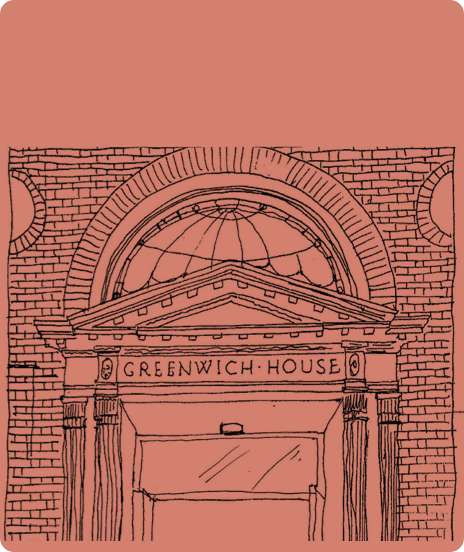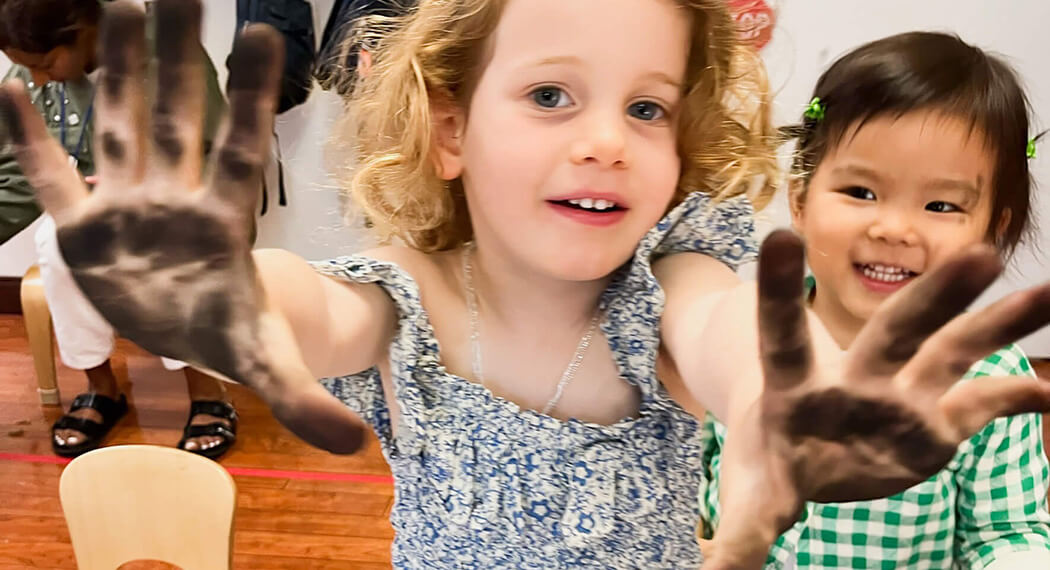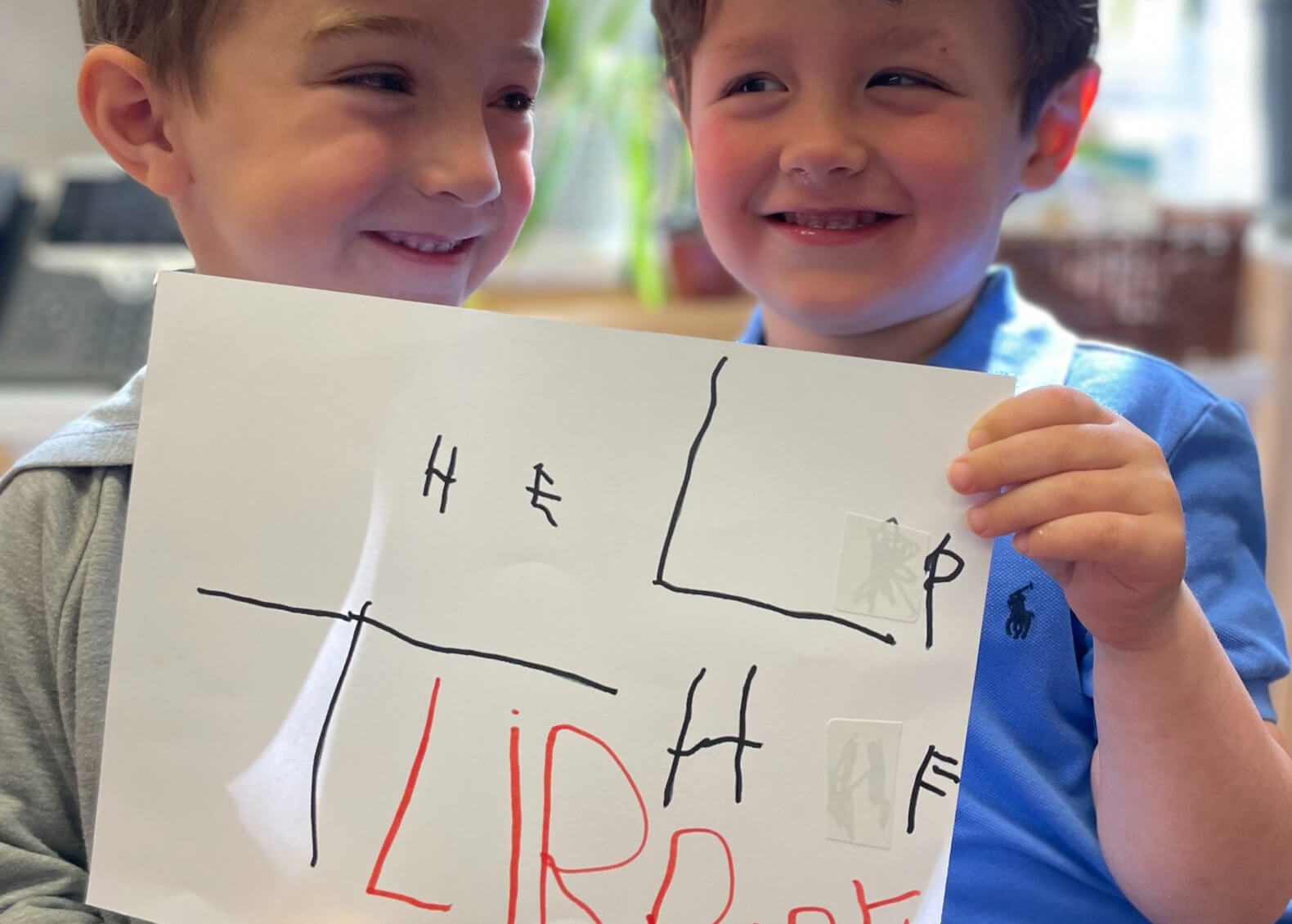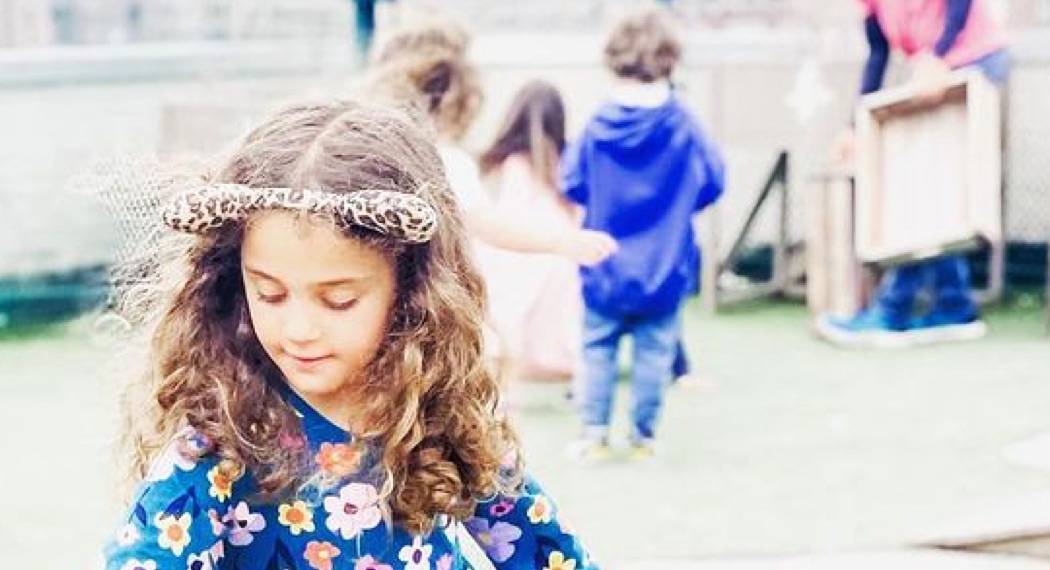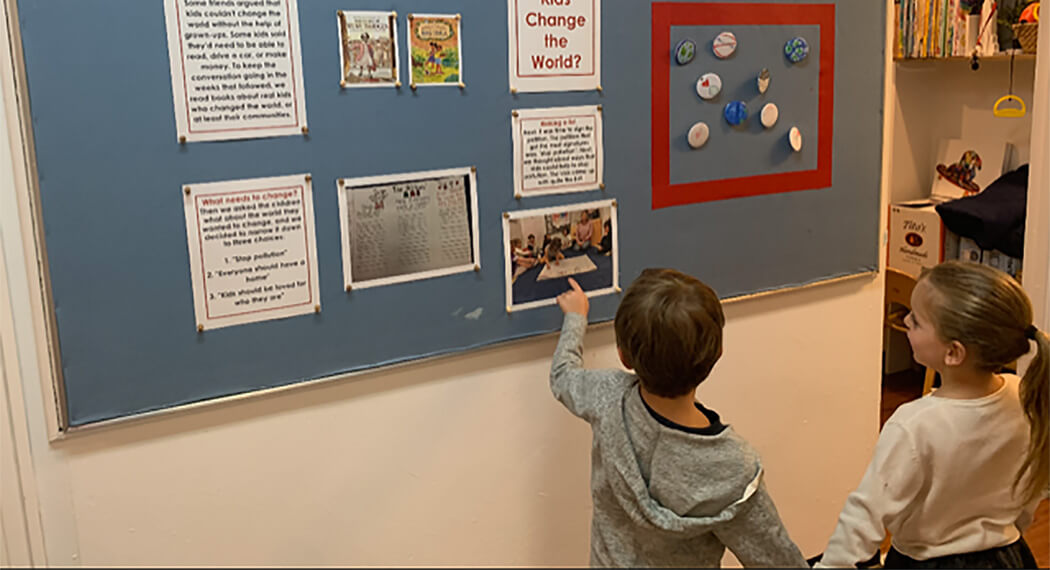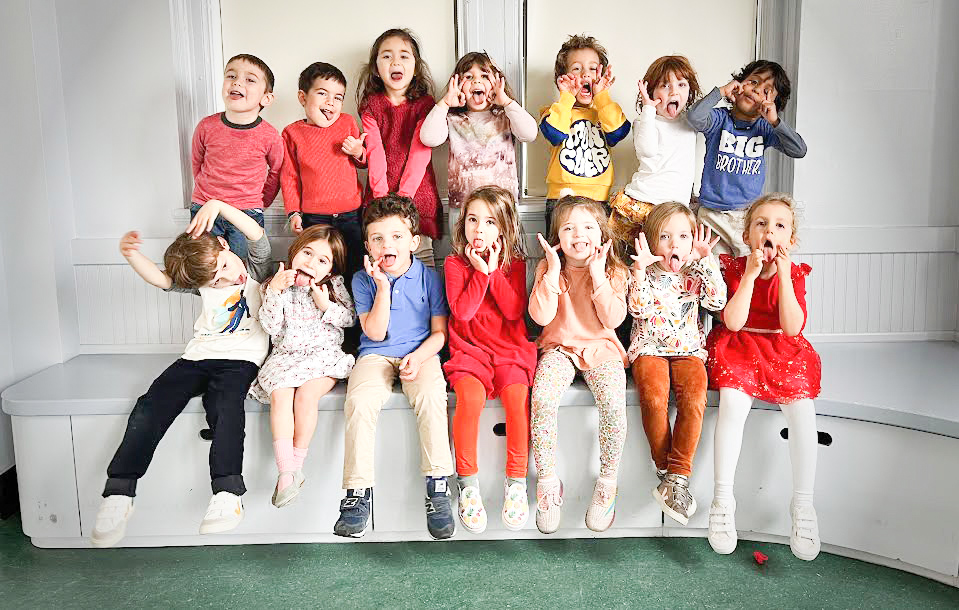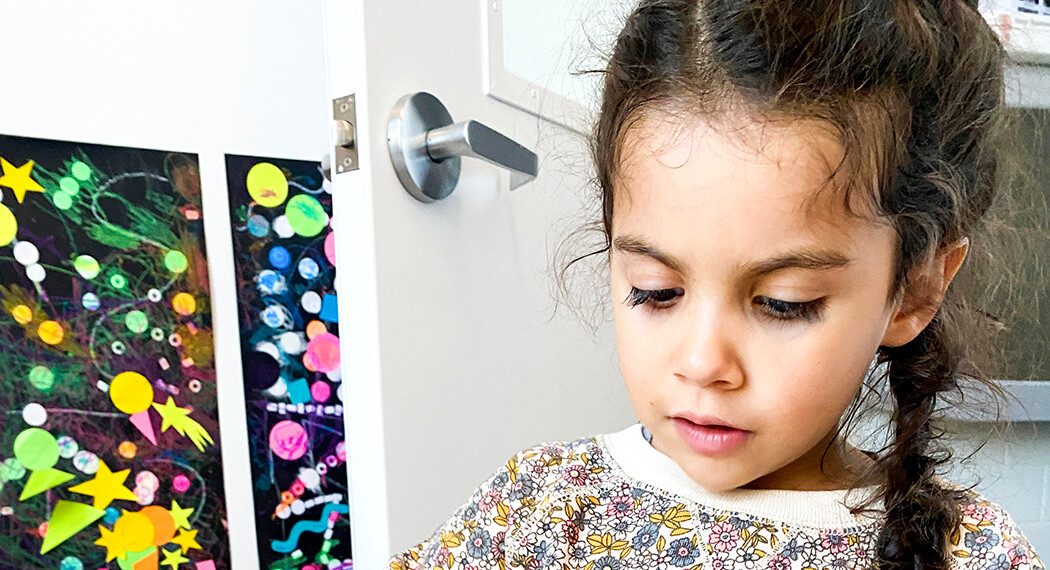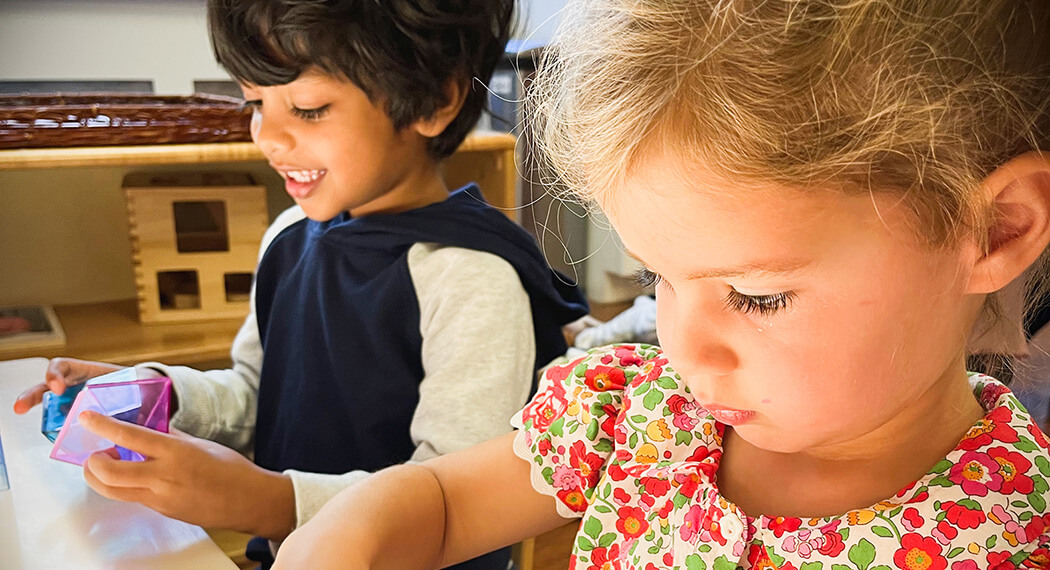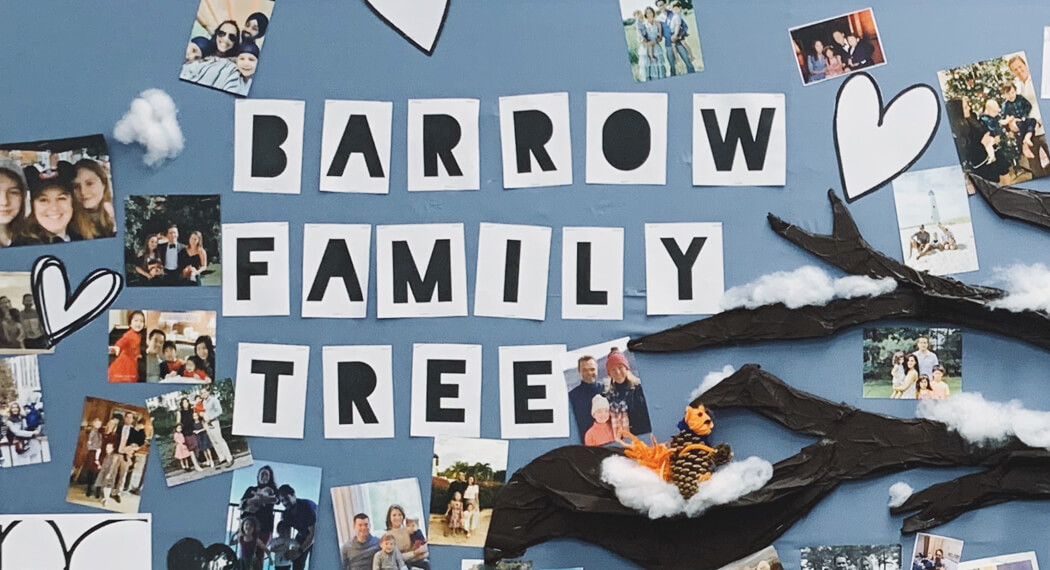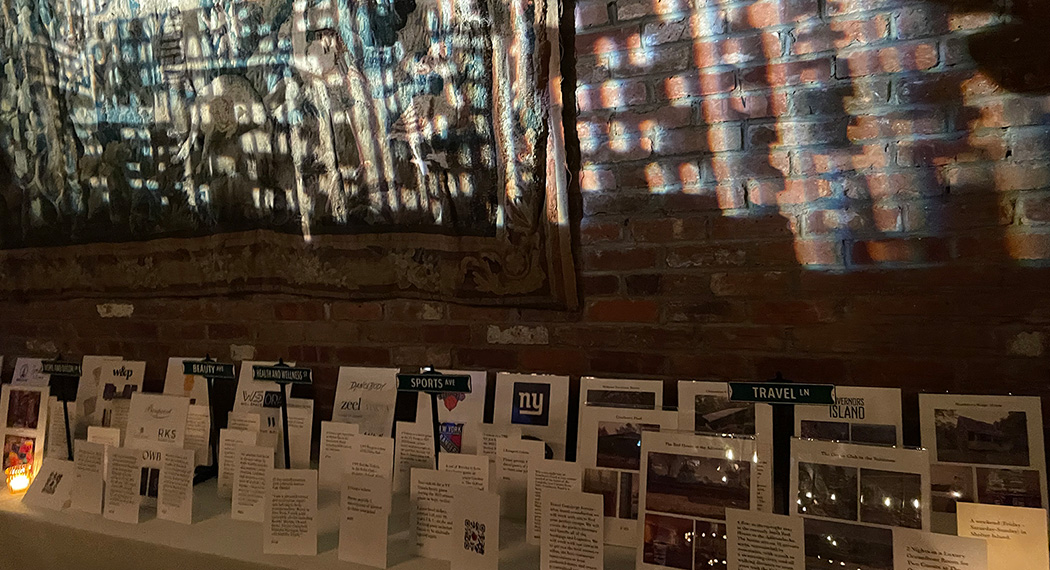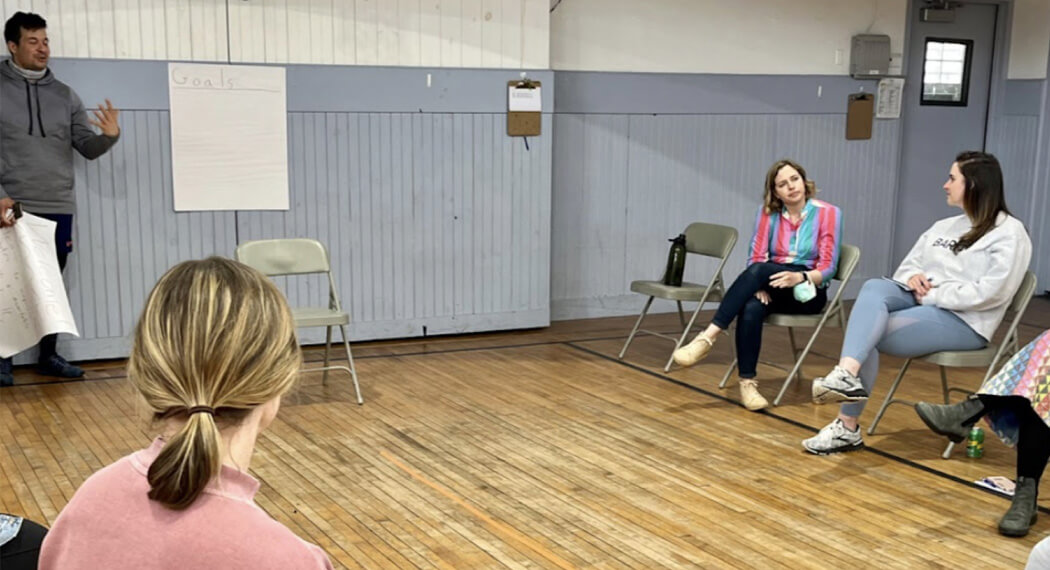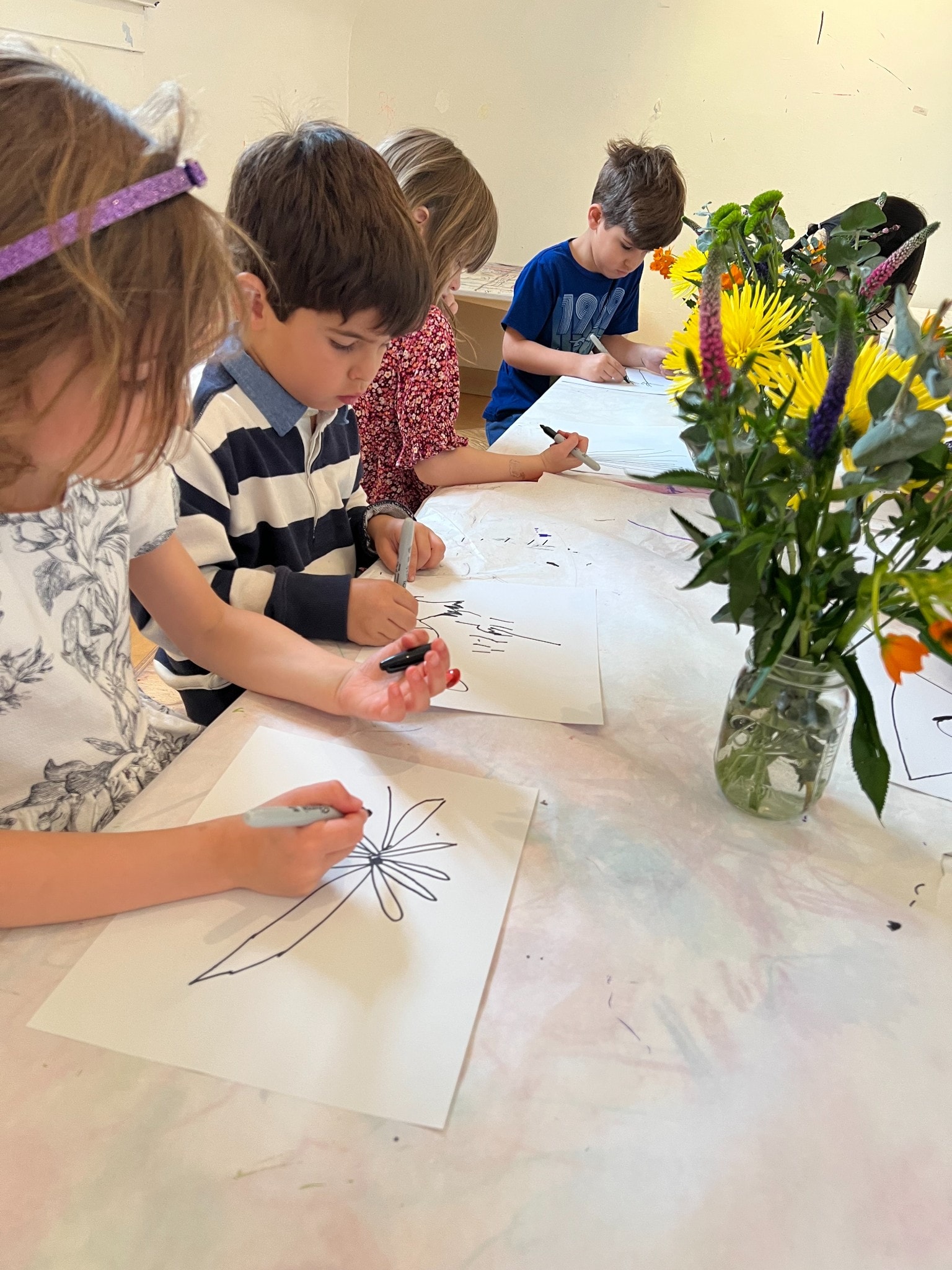For Earth Week, the Orange Room students learned how to use their senses for observational work, using flowers typically seen in the spring and brought into the classroom, including a combination of orange star plant, chrysanthemums, eucalyptus, and spike speedwell. The children observed how the flowers looked, smelled, and felt. Using art paper, black Sharpies, and colored markers, the students employed their observational skills to record their observations through drawing and art. Students were asked to think about the shapes, sizes, and colors of petals, sepals, leaves, and stems.
It is often difficult during observational drawing to separate the imaginative and creative aspects of art and record precisely what we are witnessing. Some of us may wish to use rainbow colors or paint our green stems black. We discussed how it is important for scientists to distinguish between observational drawing and painting and imaginative drawing. We began by considering the various lines (straight, squiggle, zigzag) and shapes (circles, ovals, cones) that we observe when examining each flower.
I once had a student point out that observational drawing of plants was like creating a portrait of a plant, just like creating a portrait of a person. I like to use that analogy as I support the children in their observational work. As the students have been working on self-portraits over the past school year, this was a great way to make a connection between abstract and representational art.

